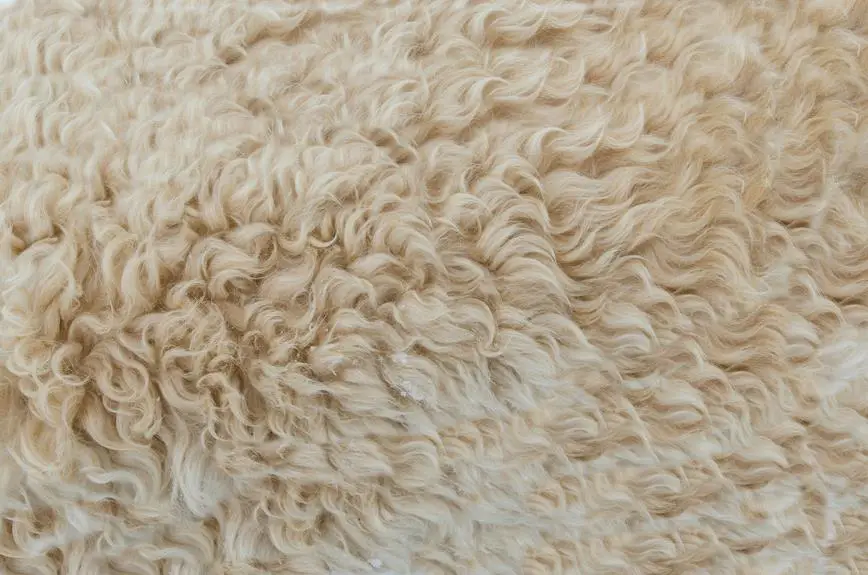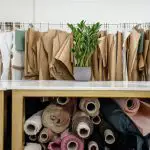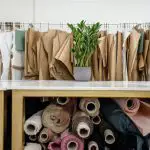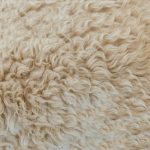When you're faced with the choice between brocade and damask, it's essential to consider what you're aiming to achieve. Brocade brings a luxurious texture and complexity that suits formal occasions, while damask offers a more understated elegance that's perfect for everyday use. Each fabric has its own advantages, but determining which one is better for your needs involves looking deeper into their characteristics and applications. So, which fabric aligns more closely with your style and purpose? The answer might surprise you.
Table of Contents
Overview of Brocade
Brocade is a richly textured fabric, often featuring intricate patterns woven with gold or silver threads that add a luxurious touch to any design. This opulent fabric has a long history, dating back to ancient China, where it was used in royal garments and decorations. When you touch brocade, you'll notice its unique weight and depth, making it stand out among other fabrics.
You can find brocade used in various applications, from upholstery and drapery to evening gowns and accessories. Its designs often draw on floral, paisley, or baroque motifs, giving each piece a classic elegance. When you decorate with brocade, you're not just adding fabric; you're inviting a sense of grandeur into your space.
While brocade is stunning, it does require some care. Dry cleaning is often recommended to maintain its beauty and prevent damage. If you're considering brocade for your next project, keep in mind its ability to elevate both formal and casual settings. Whether you're draping it over a chair or wearing it to an event, brocade makes a statement that's hard to ignore.
Overview of Damask
When you explore damask, you'll uncover its rich history and origins that trace back centuries.
You'll also see how unique weaving techniques contribute to its distinct appearance and texture.
Today, damask is commonly used in various applications, from elegant table linens to luxurious upholstery.
History and Origins
Damask has a rich history that dates back to ancient times, showcasing its evolution as a luxurious fabric favored by various cultures. Originating in the Middle East, it gained prominence during the Byzantine Empire, where the intricate patterns and soft textures made it a symbol of wealth and sophistication. As trade routes expanded, damask spread to Europe, becoming a staple in royal households and elite institutions.
You might find it interesting that damask's appeal can be attributed to several key factors:
- Versatility: It's suitable for a variety of applications, from upholstery to table linens.
- Timeless Aesthetic: The elegant patterns and sheen have remained in vogue throughout centuries.
As you explore the history of damask, keep in mind how its origins shaped the fabric we admire today. Its journey through time not only highlights its luxurious nature but also its ability to adapt and thrive in diverse settings.
Understanding this background can enhance your appreciation for damask's beauty and significance in the world of textiles.
Weaving Techniques Explained
Understanding the weaving techniques behind damask reveals the artistry and skill that contribute to its distinctive patterns and luxurious feel.
Damask fabric is created using a complex weaving method known as jacquard weaving, where intricate designs are woven directly into the fabric rather than printed or embroidered on the surface. This technique allows for a reversible pattern, giving damask its unique charm.
The process begins with a loom that employs a series of warp and weft threads. The warp threads run vertically, while the weft threads weave horizontally. By manipulating the tension and positioning of specific threads, skilled weavers create contrasting textures and shades, resulting in the rich, detailed designs characteristic of damask.
Typically, damask is made from silk, linen, or cotton, each adding its own touch of elegance. The combination of these fibers enhances the fabric's luster and durability.
You'll notice how light interacts with the woven patterns, creating a dynamic visual effect that changes with movement and perspective. This weaving technique not only showcases creativity but also requires precision and expertise, making damask a true testament to textile craftsmanship.
Common Uses Today
You'll find damask commonly used in home decor, such as table linens, curtains, and upholstery, thanks to its elegant appearance and durability. This fabric not only enhances the aesthetic of your space but also offers practical benefits, making it a favorite choice among homeowners and interior designers alike.
Damask's intricate patterns and soft texture create an inviting atmosphere, and its versatility means it can suit various design styles, from traditional to modern.
Here are some common uses for damask today:
- Table Linens: Damask tablecloths and napkins add a touch of sophistication to dining experiences.
- Curtains: Using damask in window treatments can elevate the overall look of a room while providing privacy.
Key Differences in Weave
Brocade features a more intricate, raised pattern woven into the fabric, while damask typically presents a flat, reversible design.
When you explore brocade, you'll notice its luxurious and textured appearance, often created using a Jacquard loom. This allows for complex designs that can include floral motifs and other elaborate details. The raised patterns in brocade not only enhance its visual appeal but also add a tactile quality that stands out.
On the other hand, damask is characterized by its simpler, woven patterns that are often monochromatic. The designs can be seen on both sides, making it versatile for various applications. Since damask relies on a more straightforward weaving technique, it tends to be smoother and lighter than brocade.
When deciding between the two, consider how the weave affects the fabric's overall look and feel. If you're after a rich, textured appearance, brocade may be your best bet. However, if you prefer something more subtle and elegant, damask could be the ideal choice.
Ultimately, understanding these differences in weave can help you make an informed decision based on your specific needs and style preferences.
Weight and Durability Comparison
When comparing weight and durability, brocade tends to be heavier and more robust, making it ideal for upholstery and formal wear, while damask is lighter and more suitable for drapery and casual settings. If you're considering these fabrics for your next project, it's important to think about how their weight impacts their use.
Here are some key factors to keep in mind:
- Brocade: Its dense weave offers excellent durability, making it resistant to wear and tear. If you're looking for something that'll last for years, brocade's your best bet.
- Damask: While still durable, damask is lighter and more delicate, best suited for less demanding applications. If you're after something airy and elegant, this fabric fits the bill.
Aesthetic Appeal and Usage
When you consider aesthetic appeal, brocade and damask offer distinct visual textures that can elevate any space.
You'll find that each fabric has its own common applications, from luxurious upholstery to elegant garments, reflecting their unique styles.
Additionally, understanding their cultural significance and history can help you appreciate their beauty even more.
Visual Texture Differences
Featuring intricate patterns and rich colors, brocade offers a luxurious aesthetic that's perfect for formal settings, while damask, with its subtle sheen and elegant designs, suits both casual and sophisticated environments.
When you consider the visual texture differences, you'll see how each fabric brings its unique charm to the table.
Brocade stands out with its raised patterns and vibrant hues, making it an ideal choice for statement pieces. On the other hand, damask provides a more understated elegance, often featuring tone-on-tone designs that add depth without overwhelming the senses.
Here's what to keep in mind:
- Brocade: Bold, ornate patterns create a dramatic effect.
- Damask: Subtle designs offer versatility for various occasions.
Ultimately, your choice between brocade and damask will depend on the ambiance you wish to create. If you want to impress with grandeur, brocade is your go-to. For a more relaxed yet elegant vibe, damask fits the bill perfectly.
Common Fabric Applications
Both brocade and damask serve distinct purposes in the world of textiles, each enhancing spaces and garments with their unique aesthetic appeal and practical applications.
Brocade, often characterized by its rich patterns and raised designs, is perfect for creating luxurious statement pieces. You might find it in upholstery for furniture, draperies, and elegant evening wear. Its opulence adds a touch of grandeur to any setting.
On the other hand, damask features intricate, reversible designs that create a subtle elegance. You often see damask in table linens, such as tablecloths and napkins, bringing sophistication to dining experiences. It's also popular for bedding and curtains, where its smooth texture contributes to a cozy yet refined atmosphere.
When choosing between these fabrics, consider the mood you want to create. If you're aiming for bold and dramatic, brocade could be your go-to. But if you prefer understated elegance, damask might be the better choice.
Ultimately, both fabrics offer versatility and can elevate your home decor or wardrobe, making them valuable additions to your textile collection.
Cultural Significance and History
Brocade and damask each carry a rich cultural history, reflecting the artistry and craftsmanship of the regions where they originated. When you explore these fabrics, you'll find that they come with unique stories tied to their usage and significance in different cultures.
Brocade has often been associated with luxury and opulence, particularly in Byzantine and Asian cultures. It's been used in royal garments and ceremonial attire, showcasing intricate designs that symbolize status and wealth.
On the other hand, damask, with its elegant, reversible patterns, has roots in the Middle East and was commonly used for table linens and upholstery, signifying refinement in domestic spaces.
Here are some key points about their cultural significance:
- Brocade: Often used in royal attire, symbolizing wealth and power.
- Damask: Known for its versatility in home decor, reflecting sophistication.
Choosing the Right Fabric
When selecting the right fabric for your project, consider the unique characteristics and intended use of either brocade or damask.
Brocade, known for its rich patterns and textured surface, is often heavier and more luxurious, making it ideal for formal occasions, upholstery, or statement pieces. If you're aiming for opulence in your design, brocade might be the perfect fit.
On the other hand, damask offers a more subtle elegance with its intricate, reversible patterns. It's typically lighter and more versatile, making it suitable for everyday use, table linens, or even clothing. If durability and ease of care are your priorities, damask might be the better choice.
Think about the final look and feel you want to achieve. Brocade's bold, vibrant designs can make a striking impact, while damask's understated sophistication can lend a refined touch to your space.
Don't forget to consider maintenance; brocade may need more careful cleaning compared to the more forgiving damask. Ultimately, match the fabric's qualities to your project's needs to ensure you'll be happy with the results for years to come.
Frequently Asked Questions
Can Brocade or Damask Be Used for Upholstery Projects?
Yes, both brocade and damask can be used for upholstery projects. Their rich textures and intricate patterns add elegance to furniture. Just ensure you choose the right weight and durability for your specific needs.
How Do I Care for Brocade and Damask Fabrics?
To care for brocade and damask fabrics, you should vacuum regularly with a brush attachment, spot clean stains gently, and avoid direct sunlight. For deeper cleaning, consult professional services to maintain their luxurious appearance.
Are Brocade and Damask Fabrics Eco-Friendly?
Brocade and damask fabrics can vary in eco-friendliness. If they're made from natural fibers like cotton or silk, they're generally more sustainable. Always check for certifications to ensure you're making an environmentally conscious choice.
What Are the Historical Origins of Brocade and Damask?
Brocade and damask trace their origins to ancient civilizations, with brocade emerging in China and damask in the Middle East. You'll find both fabrics richly woven, showcasing intricate designs that reflect their cultural significance.
Can I Find Brocade or Damask in Sustainable Options?
Yes, you can find sustainable options for both brocade and damask. Many manufacturers now offer eco-friendly fabrics made from organic materials, recycled fibers, or non-toxic dyes, ensuring your choices are stylish and environmentally responsible.
- Hypoallergenic Sock Fabrics for Foot Allergies - June 5, 2025
- Best Hypoallergenic Sock Materials for Sensitive Feet - June 5, 2025
- Are There Hypoallergenic Options for Winter Coats and Jackets? - June 5, 2025







